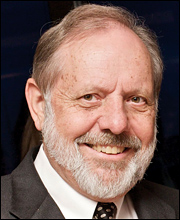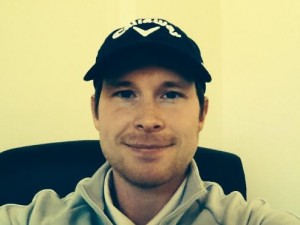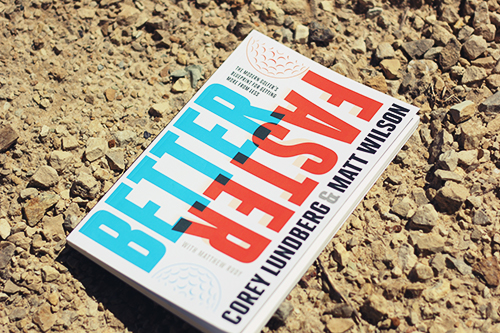Today’s episode is all about learning and performance in golf and how this understanding should affect the way you practice and learn golf. Our two guests are Distinguished Research Professor Dr. Robert Bjork, and Adam Young, golf coach and author of The Practice Manual.
We’re answering questions like “Do we trick ourselves into thinking we’re improving, learning, and actually getting better?” and “What should we be going for in our learning environment?”. Start listening below!
[aesop_chapter title=”The difficulty of your practice” bgtype=”img” full=”on” img=”http://golfsciencelab.com/wp-content/uploads/2015/05/range.jpg”]
It’s very easy for people to think that our current performance during the training and learning process is an accurate index of learning. Often it’s not only inaccurate, it’s very, very misleading. That’s because conditions that can lead to rapid improvement in performance don’t support learning on long-term.
When most people think about practice, it simply means how well they’re hitting the ball right then and how they feel about their swing. Primarily they take one club, hit balls in rapid succession, hitting one then raking a ball over and hitting another, admire the ball against the sky, never having actually aimed at anything. That will lead to good performance because in part if you hit a good shot, you’ll drag a ball over and do what you just did. Very little learning happens with that kind of blocked mass practice.
That will lead to good performance because in part if you hit a good shot, you’ll drag a ball over and do what you just did. Very little learning happens with that kind of blocked mass practice.
Most people instinctively feel that if they are performing well, then they are learning and so changing that mindset is going to be the biggest battle for the industry.
Conditions that appear to create challenges for the learner often appear to be slowing down the learning process. We’ve come to label those desirable difficulties and they can actually enhance long-term learning.
So it’s a major factor and it’s one basic reason why people do not practice in an optimal way, and why instructors often don’t choose optimal conditions of instruction.
[aesop_chapter title=”Performance During a golf lesson” bgtype=”img” full=”on” img=”http://golfsciencelab.com/wp-content/uploads/2015/08/golfhole.jpg”]
We can fake learning during a lesson.
If we make a pupil stand there with a 7-iron, hitting to the same target over and over again, they are going to perform pretty well.
But is that actually going to be transferable? Is that going to be retained?
The answer to these questions is often ‘no’.
Practicing this way is going to lead to a much lower rate of retention. That’s not to say, however, that we shouldn’t do it. As instructors we have to balance out the expectation levels of our pupils with what is good for them.
If we just did what was good for a pupil, we’d have them all random practicing most of the time, but this isn’t always the case.
Some examples where that’s not true may be if we are new to a person. In this case we might want them to stay in block practice mode just until they get accustomed to it. So in the early stages of learning that’s okay and it builds confidence too, which is important for a person to at least feel like they are learning.
But once they get to a certain level we want to switch over to a more random practice. So once the mode of program is there, or built, we want to start improving our access to it and that’s where random practice comes in.
[aesop_chapter title=”Start Varying Your Golf Practice” bgtype=”img” full=”on” img=”http://golfsciencelab.com/wp-content/uploads/2015/08/golfcourse.jpg”]
One concept to improve your practice is varying the conditions of practice rather than keeping them constant and predictable. Simply introducing variations whether it’s clubs, targets, anything.
If you go somewhere to learn tennis, your instructor will work with you on your forehand, then on your backhand, and then on y our serve. Wherever you go you will virtually always encounter the same notion of working on one thing at a time.
But what research shows is that you ought to interleave the practice of those things.
You won’t look like you are making as much progress but your long-term learning and retention will be much better.
This is all related to the spacing effect, which is one of the most reliable effects on all of the work on learning. What the spacing effect says is that if you are going to study or practice something twice and you have the choice between two sessions in a row or one session, then go on and do other things before coming back to do another session. Long-term learning is much better when you space out those practice or study sessions.
[aesop_chapter title=”About Our Guests” bgtype=”img” full=”on” img=”http://golfsciencelab.com/wp-content/uploads/2015/09/grassycourse.jpg”]
Dr. Robert Bjork
 Robert A. Bjork (Ph.D., Stanford University; B.A., Minnesota) is Distinguished Research Professor in the Department of Psychology at the University of California, Los Angeles. His research focuses on human learning and memory and on the implications of the science of learning for instruction and training.
Robert A. Bjork (Ph.D., Stanford University; B.A., Minnesota) is Distinguished Research Professor in the Department of Psychology at the University of California, Los Angeles. His research focuses on human learning and memory and on the implications of the science of learning for instruction and training.
He has served as Editor of Memory & Cognition (1981-85) and Psychological Review (1995-2000), Co-editor of Psychological Science in the Public Interest (1998-2004), and Chair of a National Research Council Committee on Techniques for the Enhancement of Human Performance (1988-1994).
He is a past president or chair of the American Psychological Society (APS); the Western Psychological Association; the Psychonomic Society; the Society of Experimental Psychologists; the Council of Editors of the American Psychological Association (APA); and the Council of Graduate Departments of Psychology. He is a recipient of UCLA’s Distinguished Teaching Award; the American Psychological Association’s Distinguished Scientist Lecturer and Distinguished Service to Psychological Science Awards; the American Physiological Society’s Claude Bernard Distinguished Lectureship Award, and the Society of Experimental Psychologists’ Norman Anderson Lifetime Achievement Award. He is a Fellow of the American Academy of Arts and Sciences
Adam Young
 Adam has studied everything from motor learning research to brain function. He combines knowledge from several different fields to create a more coherent picture of the golfer. Adam possesses a sound understanding of the technical elements of the swing, yet understands that great golf is much more than just the way you swing the club.
Adam has studied everything from motor learning research to brain function. He combines knowledge from several different fields to create a more coherent picture of the golfer. Adam possesses a sound understanding of the technical elements of the swing, yet understands that great golf is much more than just the way you swing the club.
Adam currently teaches golfers the importance of developing skills as well as technique, and builds their games as a whole – including strategic and psychological strength. Adam’s theories are cutting edge, utilizing much of the newest research in the field of learning. He presents them in an easy to understand way that will make you revolutionize how you learn the game.
Adam has worked at some of the top facilities in the world, including the Leadbetter Academies and the world-famous Turnberry Resort. He currently teaches at one of Europe’s most prestigious resorts in La Manga Club, Spain. He is also Author of “The Practice Manual: The Ultimate Guide for Golfers”, a bestselling golf book on Amazon.




